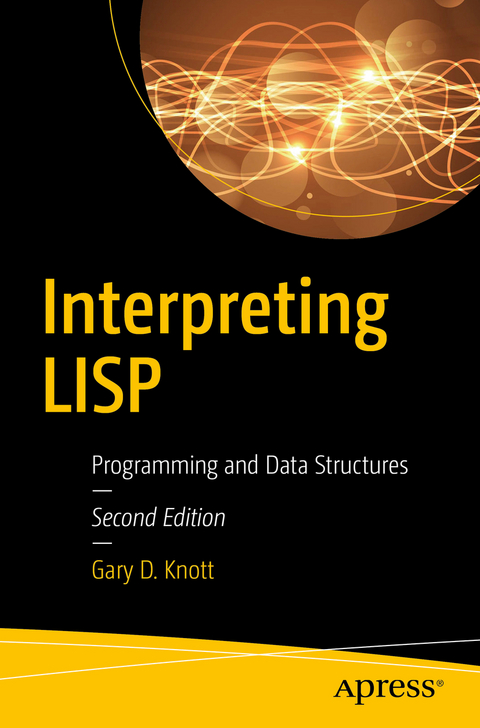
Interpreting LISP
Apress (Verlag)
978-1-4842-2706-0 (ISBN)
Interpreting Lisp will be of special interest to those learning and using programming languages and computer architecture as well as data structures. This book will be useful to autodidacts, professional programmers, and computer enthusiasts in a wide variety of fields.
What You'll Learn
Use the atom table and the number table in Lisp
Master expressions, typed pointers, arguments and results in typed pointers, and more
Write lambda expressions in Lisp
Bind actual values to formal arguments
Develop games in Lisp
Who This Book Is For
Experienced programmers new to Lisp.
Gary Knott, PhD is founder/CEO of Civlized Inc., the makers of MLAB. He is also a professor, expert consultant in mathematical models with emphasis on applications of interest to the National Institute of Health (NIH). He was a computer scientist and programmer for the NIH as well.
1. LISP.- 2. The Atom Table and the Number Table.- 3. Evaluation.- 4 Some Functions and Special Forms.- 5. S-Expressions.- 6. Typed-Pointers.- 7. Pictorial Notation.- 8. More Functions.- 9. Arguments and Results are Typed-Pointers.- 10. List Notation.- 11. More Special Forms.- 12. Defining Functions: λ-Expressions.- 13. More Functions.- 14. Defining Special Forms.- 15. The Label Special Form.- 16. The Quote Macro.- 17. More Functions.- 18. More About Typed-Pointers.- 19. Binding Actual Values to Formal Arguments.- 20. Minimal LISP.- 21. More Functions.- 22. Input and Output.- 23. Property Lists.- 24. What is LISP Good For?.- 25. Symbolic Differentiation.- 26. Game-Playing.- 27. The LISP Interpreter Program.- 28. Garbage Collection.- 29. LISP in C.
| Erscheinungsdatum | 05.07.2017 |
|---|---|
| Zusatzinfo | 15 Illustrations, black and white; XIII, 150 p. 15 illus. |
| Verlagsort | Berkley |
| Sprache | englisch |
| Maße | 155 x 235 mm |
| Themenwelt | Mathematik / Informatik ► Informatik ► Programmiersprachen / -werkzeuge |
| Mathematik / Informatik ► Informatik ► Software Entwicklung | |
| Informatik ► Theorie / Studium ► Compilerbau | |
| ISBN-10 | 1-4842-2706-9 / 1484227069 |
| ISBN-13 | 978-1-4842-2706-0 / 9781484227060 |
| Zustand | Neuware |
| Informationen gemäß Produktsicherheitsverordnung (GPSR) | |
| Haben Sie eine Frage zum Produkt? |
aus dem Bereich


